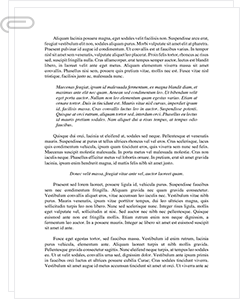 Study Document
Study Document
1960s Cold War Essay
Conceptions of the Cold War
The Cold War was the time period following the end of World War II, when the world was basically divided between Communism on the one hand and Capitalism on the other. The West favored Capitalism and the East favored Communism. The U.S. was the main power in the West and Soviet Russia was the main power in the East. The economic approaches of the two powers were only part of the story, however; this was also a war for hegemony. The U.S. wanted to influence the world order just as much as the Soviets did. Each tried to spread their influence—the U.S. throughout Europe via the Marshall Plan (Hogan & Hogan, 1989); the Soviets throughout Asia and Latin America through subsidization of Communist takeovers. The scare of Communism taking over in the U.S. was evident: McCarthyism was the result of this scare, but the assassination of JFK in 1963 and RFK in 1968 only added to the paranoia. The Vietnam War, supposedly fought to prevent the Soviets from extending their Communist influence throughout Asia, added to the tension at home and abroad. The arms race escalated the tension that Kennedy had sought to de-escalate…
…was taught that the Cold War was about hegemony, and all of these answers are consistent with my view, as there were really many facets to the Cold War. They all acknowledged Russia and the U.S as the main actors in the Cold War and the main event was identified as the Cuban Missile Crisis (the Bay of Pigs by the younger person, and simply “Kennedy” by the middle-aged person). What their responses show is that there is a common view across generations of what the Cold War was all about, and that propaganda used during the Cold War also served…
Sample Source(s) Used
References
Hogan, M. J. & Hogan, M. (1989). The Marshall Plan: America, Britain and the
Reconstruction of Western Europe, 1947-1952. Cambridge University Press.
Stone, O. & Kuznick, P. (2012). The untold history of the United States. NY: Gallery.
Related Documents
 Study Document
Study Document
Cold War Era
Cold War was a period of great danger and international tension, brought on by the power struggles between the United States and the Soviet Union. The communist ideology -- which the Soviets were aggressively trying to spread through Europe and elsewhere -- was seen as an enormous threat to the U.S., while the capitalist / democratic ideology was seen by the Soviets as a threat to their way of life
 Study Document
Study Document
Cold War Era When We
S.S.R., which would ostensibly eliminate the threat posed by the U.S.S.R.'s capabilities. The report takes on a tone almost encouraging that to happen. It was very much the public mood of the time that would have supported that initiative. That the world came so close to the use of nuclear confrontation during the Cuban Missile Crisis is indicative of this, and it was only the ability of JFK to resist
 Study Document
Study Document
Cold War During the Cold War Era,
Cold War During the Cold War era, the United States and the Soviet Union dominated the European political landscape. They also engaged each other ideologically in Korea (Weber, n.d.). World War II was an enormous theatre. During the war time President Franklin Roosevelt cut out an image for himself. He was capable of articulating false freedom of speech and religion. The last straw that broke the camel's back was when the Japanese
 Study Document
Study Document
Cold War 'By the Beginning of the
Cold war 'By the beginning of the twentieth century, weapons of war were themselves contributing to the outbreak of wars ... It comes as something of a surprise, then, to realize that the most striking innovation in the history of military technology has turned out to be a cause of peace and not war," (Gaddis 85). In fact, the most striking military innovation until that point, the creation of nuclear
 Study Document
Study Document
Cold War in 1945, the Second World
Cold War In 1945, the Second World War ended, causing the Nationalists and Communists of China to engage in a civil war which could not be controlled by any people who tried to intercede. This civil war caused the Chinese people to be engulfed in their own issues for the next four years that they were not affected by the ongoing Soviet-American tension. In the year 1949 however, the Communist party
 Study Document
Study Document
Cold War the Term Cold
Relations with West improved a lot. Economic liberalization process also started after the rise of Gorbachev as many economic and social problems plagued Soviet Union. In the face of economic issues facing the empire the cost of managing the cold war with respect to the Cold War arms race almost endangered its survival. The Chernobyl catastrophe in 1986 made matters even worse for the Soviet Republic. On American front




